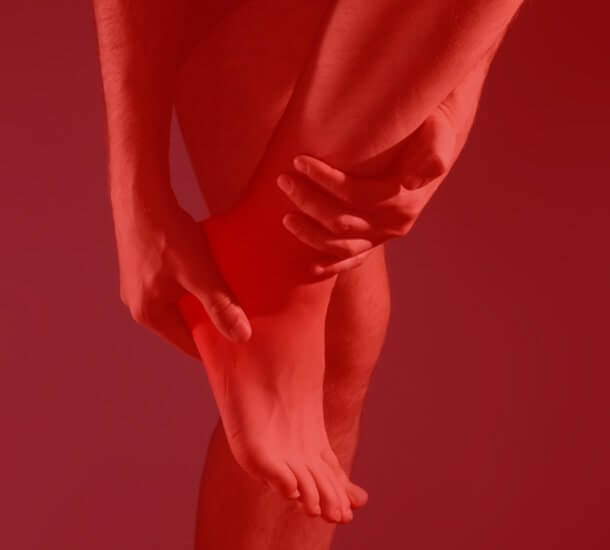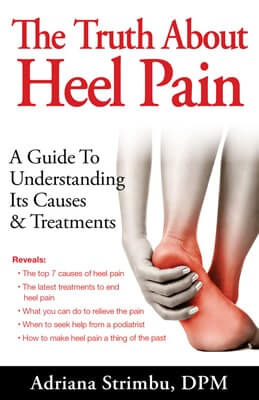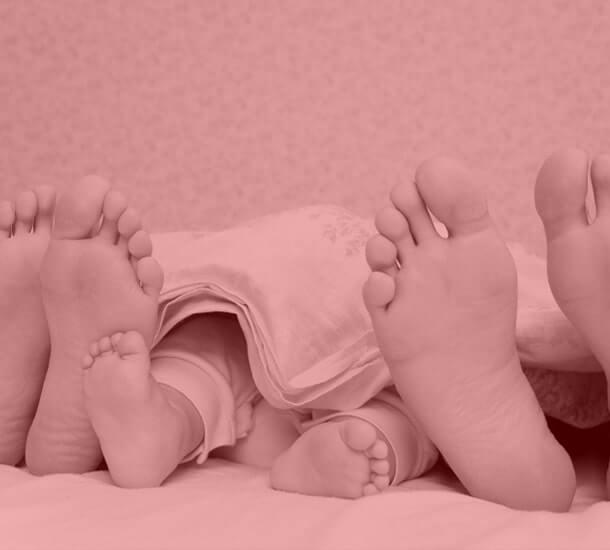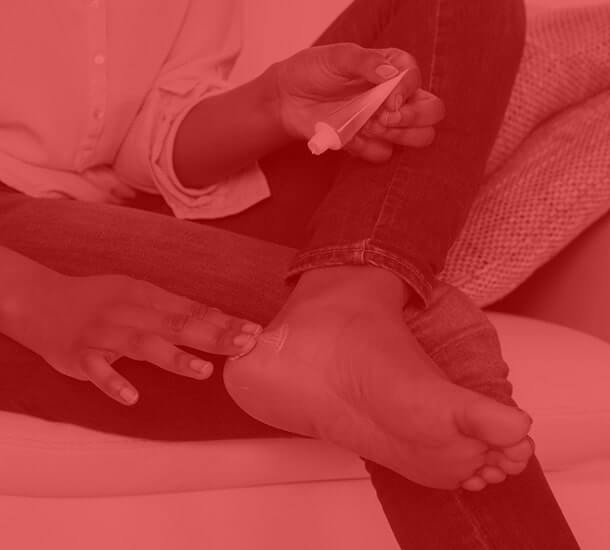Connect With Us
Blog
Items filtered by date: September 2023
Are Bunions Affecting Your Everyday Life?
Causes of Sudden Ankle Pain Without Injury

Sudden ankle pain can strike out of nowhere, leaving you puzzled and uncomfortable. While it is easy to attribute such pain to a recent injury, there are instances when ankle pain seemingly appears out of thin air. Having an understanding the potential causes of sudden ankle pain without any obvious injury is important for proper management. One common culprit is overuse or strain. Repetitive movements, such as excessive walking or standing for extended periods, can lead to inflammation and discomfort in the ankle joint. Another factor to consider is footwear. Wearing ill-fitting shoes or high heels can strain the ankle, resulting in unexpected pain. Additionally, conditions such as gout or arthritis can manifest in the ankle joint, causing sudden and severe discomfort. Nerve compression or impingement may also be responsible for unexplained ankle pain. Additionally, changes in weather and temperature can impact joint health, potentially triggering discomfort. If you are experiencing sudden ankle pain, it is suggested that you visit a podiatrist who can determine the cause and offer appropriate treatment options.
Ankle pain can have many different causes and the pain may potentially be serious. If you have ankle pain, consult with Adriana Strimbu, DPM from Complete Foot & Ankle Care. Our doctor will assess your condition and provide you with quality foot and ankle treatment.
Ankle pain is any condition that causes pain in the ankle. Due to the fact that the ankle consists of tendons, muscles, bones, and ligaments, ankle pain can come from a number of different conditions.
Causes
The most common causes of ankle pain include:
- Types of arthritis (rheumatoid, osteoarthritis, and gout)
- Ankle sprains
- Broken ankles
- Achilles tendinitis
- Achilles tendon rupture
- Stress fractures
- Tarsal tunnel syndrome
- Plantar fasciitis
Symptoms
Symptoms of ankle injury vary based upon the condition. Pain may include general pain and discomfort, swelling, aching, redness, bruising, burning or stabbing sensations, and/or loss of sensation.
Diagnosis
Due to the wide variety of potential causes of ankle pain, podiatrists will utilize a number of different methods to properly diagnose ankle pain. This can include asking for personal and family medical histories and of any recent injuries. Further diagnosis may include sensation tests, a physical examination, and potentially x-rays or other imaging tests.
Treatment
Just as the range of causes varies widely, so do treatments. Some more common treatments are rest, ice packs, keeping pressure off the foot, orthotics and braces, medication for inflammation and pain, and surgery.
If you have any questions, please feel free to contact our office located in Hallandale Beach, FL . We offer the newest diagnostic and treatment technologies for all your foot care needs.
Dealing With Lateral Foot Pain
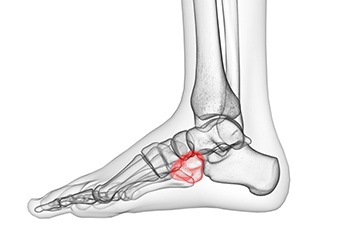
Cuboid syndrome is a frequent cause of lateral foot pain, primarily affecting the outer side of the foot. Athletes like ballet dancers and runners are often affected, with the condition resulting from the partial dislocation of the cuboid bone. This dislocation can occur suddenly due to injuries like ankle sprains or develop gradually from repetitive stress on the bone. Cuboid syndrome is characterized by the cuboid bone acting as a block, restricting the movement of surrounding foot bones. Three primary causes of cuboid syndrome include ankle injuries, repetitive strain, and altered foot biomechanics, often associated with flat feet. Symptoms encompass lateral foot pain, worsened with activity, difficulty walking, tenderness, swelling, and weakness during activities like walking, running, and jumping. Diagnosis is often challenging, and this condition can be misdiagnosed. Imaging studies may not reveal cuboid dislocation, but a physical examination involving palpation and specific tests can help identify the condition. Treatment options involve exercises to improve mobility, strength, and stability, as well as rest. A podiatrist can also manipulate and reposition the cuboid, tape it for support, prescribe orthotics, or recommend cuboid wedges to correct foot positioning. If you have lateral foot pain, it is suggested that you make an appointment with a podiatrist to obtain an accurate diagnosis and treatment that is right for you.
Cuboid syndrome, also known as cuboid subluxation, occurs when the joints and ligaments near the cuboid bone in the foot become torn. If you have cuboid syndrome, consult with Adriana Strimbu, DPM from Complete Foot & Ankle Care. Our doctor will assess your condition and provide you with quality foot and ankle treatment.
Cuboid syndrome is a common cause of lateral foot pain, which is pain on the outside of the foot. The condition may happen suddenly due to an ankle sprain, or it may develop slowly overtime from repetitive tension through the bone and surrounding structures.
Causes
The most common causes of cuboid syndrome include:
- Injury – The most common cause of this ailment is an ankle sprain.
- Repetitive Strain – Tension placed through the peroneus longus muscle from repetitive activities such as jumping and running may cause excessive traction on the bone causing it to sublux.
- Altered Foot Biomechanics – Most people suffering from cuboid subluxation have flat feet.
Symptoms
A common symptom of cuboid syndrome is pain along the outside of the foot which can be felt in the ankle and toes. This pain may create walking difficulties and may cause those with the condition to walk with a limp.
Diagnosis
Diagnosis of cuboid syndrome is often difficult, and it is often misdiagnosed. X-rays, MRIs and CT scans often fail to properly show the cuboid subluxation. Although there isn’t a specific test used to diagnose cuboid syndrome, your podiatrist will usually check if pain is felt while pressing firmly on the cuboid bone of your foot.
Treatment
Just as the range of causes varies widely, so do treatments. Some more common treatments are ice therapy, rest, exercise, taping, and orthotics.
If you have any questions, please feel free to contact our office located in Hallandale Beach, FL . We offer the newest diagnostic and treatment technologies for all your foot care needs.
Treatment Options for Flat Feet
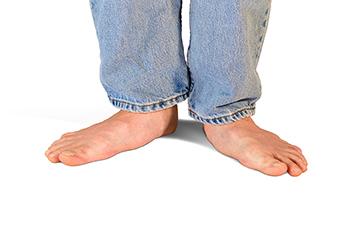
Flat feet is a condition where the arch of the foot is either too low or nonexistent. As a rule, flat feet are rarely considered to be medically serious. However, flat feet can sometimes lead to discomfort or complications, and some type of treatment may be necessary. If you are experiencing pain around the ankle or aching in the arch of the foot, it may be time to consider treatment. Additionally, if you notice that your shoes are wearing out quickly, it could be a sign that your flat feet are causing undue stress on your footwear. Non-surgical treatment includes changing footwear, investing in orthotic inserts for improved arch support, and performing certain exercises to improve the strength and flexibility of the foot muscles. These can potentially reduce pain and discomfort. Prescription painkillers may be recommended to manage pain and any stiffness associated with flat feet. When other treatments have failed or if there's a structural issue with the bones, tissues, or muscles in the feet, surgery may be considered as a last resort. For guidance about treatment options for flat feet, it is suggested that you consult a podiatrist.
Flatfoot is a condition many people suffer from. If you have flat feet, contact Adriana Strimbu, DPM from Complete Foot & Ankle Care. Our doctor will treat your foot and ankle needs.
What Are Flat Feet?
Flatfoot is a condition in which the arch of the foot is depressed and the sole of the foot is almost completely in contact with the ground. About 20-30% of the population generally has flat feet because their arches never formed during growth.
Conditions & Problems:
Having flat feet makes it difficult to run or walk because of the stress placed on the ankles.
Alignment – The general alignment of your legs can be disrupted, because the ankles move inward which can cause major discomfort.
Knees – If you have complications with your knees, flat feet can be a contributor to arthritis in that area.
Symptoms
- Pain around the heel or arch area
- Trouble standing on the tip toe
- Swelling around the inside of the ankle
- Flat look to one or both feet
- Having your shoes feel uneven when worn
Treatment
If you are experiencing pain and stress on the foot you may weaken the posterior tibial tendon, which runs around the inside of the ankle.
If you have any questions please feel free to contact our office located in Hallandale Beach, FL . We offer the newest diagnostic and treatment technologies for all your foot and ankle needs.
Footwear and Healthy Feet
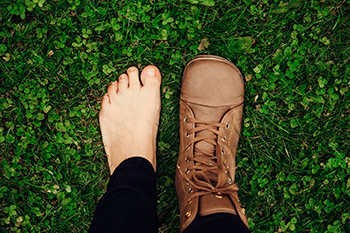
Proper footwear is paramount for maintaining healthy feet. Ill-fitting shoes can lead to any number of foot problems and even increase the risk of injury. To safeguard your foot health, it's important to select shoes that not only fit well but also provide adequate support. When making your choice, consider the nature of your activity, the type of surface you'll be on, and the need for proper support. For instance, people who spend substantial time on hard surfaces may be more susceptible to heel and forefoot pain, as well as calluses and corns. Supportive shoes with softer soles and arch supports may help. High heels, which force the feet into unnatural positions, can result in long-term postural changes and increase the chances of toe deformities, such as bunions. For active people, the right footwear can ensure proper shock absorption and stability. Seek sports shoes that offer flexibility at the ball of the foot and ample heel support. If foot problems develop or persist, it is suggested that you make an appointment with a podiatrist.
It is important to find shoes that fit you properly in order to avoid a variety of different foot problems. For more information about treatment, contact Adriana Strimbu, DPM from Complete Foot & Ankle Care. Our doctor will treat your foot and ankle needs.
Proper Shoe Fitting
Shoes have many different functions. They cushion our body weight, protect our feet, and allow us to safely play sports. You should always make sure that the shoes you wear fit you properly in order to avoid injuries and deformities such as: bunions, corns, calluses, hammertoes, plantar fasciitis, stress fractures, and more. It is important to note that although a certain pair of shoes might be a great fit for someone else, that doesn’t mean they will be a great fit for you. This is why you should always try on shoes before buying them to make sure they are worth the investment. Typically, shoes need to be replaced ever six months to one year of regular use.
Tips for Proper Shoe Fitting
- Select a shoe that is shaped like your foot
- Don’t buy shoes that fit too tight, expecting them to stretch to fit
- Make sure there is enough space (3/8” to ½”) for your longest toe at the end of each shoe when you are standing up
- Walk in the shoes to make sure they fit and feel right
- Don’t select shoes by the size marked inside the shoe, but by how the shoe fits your foot
The shoes you buy should always feel as good as they look. Shoes that fit properly will last longer, feel better, and improve your way of life each day.
If you have any questions, please feel free to contact our office located in Hallandale Beach, FL . We offer the newest diagnostic and treatment technologies for all your foot care needs.

